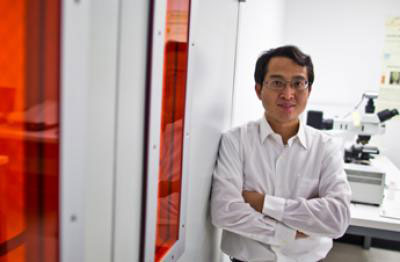 University of Central Florida Associate Professor Lei Zhai and postdoctoral associate Jianhua Zou have engineered the world's lightest carbon material in such a way that it could be used to detect pollutants and toxic substances, improve robotic surgery techniques and store energy more efficiently.
University of Central Florida Associate Professor Lei Zhai and postdoctoral associate Jianhua Zou have engineered the world's lightest carbon material in such a way that it could be used to detect pollutants and toxic substances, improve robotic surgery techniques and store energy more efficiently.
Mar 1st, 2011
Read more
Researchers have over time been able to show that medicine designed at nanoscale offers unprecedented opportunities for targeted treatment of serious diseases such as cancer. However, now research also shows that the body's immune system plays a significant part in the drug delivery process.
Mar 1st, 2011
Read more
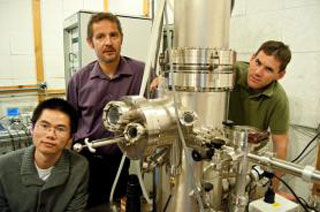 The study of the physical properties and potential applications of graphene, however, has suffered from a lack of suitable carrier materials that can support a flat graphene layer while not interfering with its electrical properties. Researchers in the University of Arizona's physics department along with collaborators from the Massachusetts Institute of Technology and the National Materials Science Institute in Japan have now taken an important step forward toward overcoming those obstacles.
The study of the physical properties and potential applications of graphene, however, has suffered from a lack of suitable carrier materials that can support a flat graphene layer while not interfering with its electrical properties. Researchers in the University of Arizona's physics department along with collaborators from the Massachusetts Institute of Technology and the National Materials Science Institute in Japan have now taken an important step forward toward overcoming those obstacles.
Mar 1st, 2011
Read more
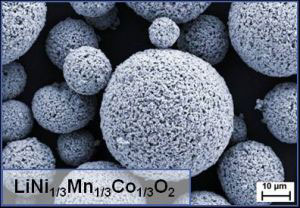 Thanks to materials science and technology, fried eggs no longer stick to the pan, computers calculate more rapidly, and tunnels can be drilled through massive rock. Increasingly complex technical challenges are faced by advancements in the research and development of materials. To bundle its competencies in this area, KIT has founded the Institute for Applied Materials (IAM) and plans to establish a new course of study.
Thanks to materials science and technology, fried eggs no longer stick to the pan, computers calculate more rapidly, and tunnels can be drilled through massive rock. Increasingly complex technical challenges are faced by advancements in the research and development of materials. To bundle its competencies in this area, KIT has founded the Institute for Applied Materials (IAM) and plans to establish a new course of study.
Mar 1st, 2011
Read more
A Kansas State University chemistry professor has been selected as a Sloan Research Fellow for her success as a promising young scholar, particularly in the research areas of sustainable energy and gold nanoparticles.
Mar 1st, 2011
Read more
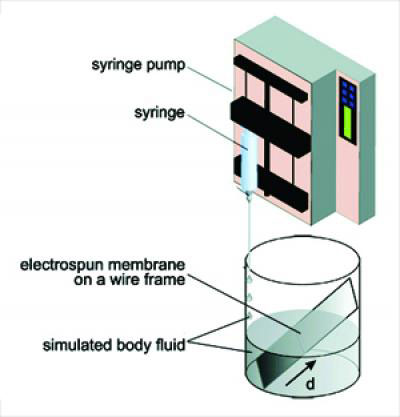 Two Washington University in St. Louis scientists are imitating nature as they attempt to solve one of the most difficult problems in orthopedic surgery: reattaching tendon to bone.
Two Washington University in St. Louis scientists are imitating nature as they attempt to solve one of the most difficult problems in orthopedic surgery: reattaching tendon to bone.
Mar 1st, 2011
Read more
The silicon chip took over forty years to approach a $300 billion business today. Now there is a new form of electronics that will hit that figure in half the time because, unlike the silicon chip, it subsumes electrics such as lighting, batteries, solar cells and heaters, not just electronics. It is usually achieved by printing and its most vital characteristic is physical flexibility.
Mar 1st, 2011
Read more
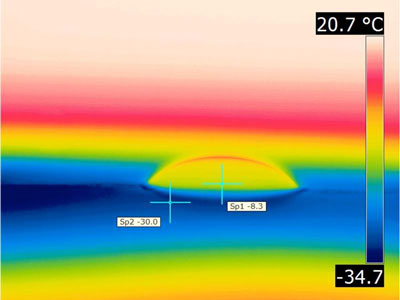 Wissenschaftler am Fraunhofer-Institut fuer Grenzflaechen- und Bioverfahrenstechnik IGB in Stuttgart haben nanostrukturierte Oberflaechen entwickelt, auf denen Wasser abgestossen wird und sich auch bei Minusgraden nahezu kein Eis bildet.
Wissenschaftler am Fraunhofer-Institut fuer Grenzflaechen- und Bioverfahrenstechnik IGB in Stuttgart haben nanostrukturierte Oberflaechen entwickelt, auf denen Wasser abgestossen wird und sich auch bei Minusgraden nahezu kein Eis bildet.
Mar 1st, 2011
Read more
CEA-Leti today announced that Mentor Graphics is the fifth industrial partner to join the IMAGINE program designed to develop maskless lithography for IC manufacturing. Mentor will develop multiple e-beam lithography data processing flows in the program.
Mar 1st, 2011
Read more
Diamond may have a softer side: T-carbon. This fluffy form of diamond, simulated in a Chinese supercomputer, could be used for a variety of applications - if someone can make the stuff and prove its stability in the real world.
Mar 1st, 2011
Read more
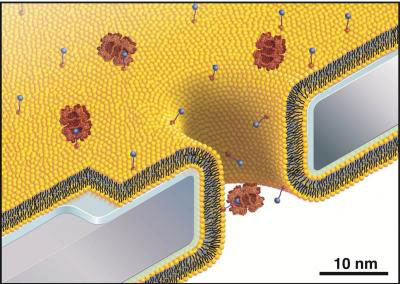 By mimicking the structure of the silk moth's antenna, University of Michigan researchers led the development of a better nanopore - a tiny tunnel-shaped tool that could advance understanding of a class of neurodegenerative diseases that includes Alzheimer's.
By mimicking the structure of the silk moth's antenna, University of Michigan researchers led the development of a better nanopore - a tiny tunnel-shaped tool that could advance understanding of a class of neurodegenerative diseases that includes Alzheimer's.
Feb 28th, 2011
Read more
New York University physicists have developed a method for packing microscopic spheres that could lead to improvements in commercial products ranging from pharmaceutical lotions to ice cream.
Feb 28th, 2011
Read more
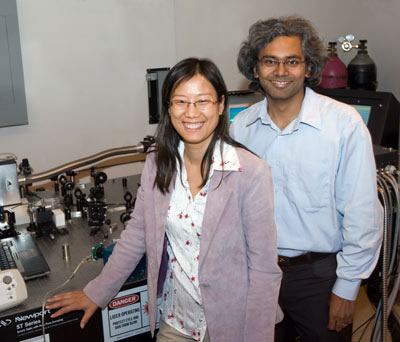 Engineering professors Bo Tan (left) and Krishnan Venkatakrishnan share a lab and a focus on nanostructures.
Engineering professors Bo Tan (left) and Krishnan Venkatakrishnan share a lab and a focus on nanostructures.
Feb 28th, 2011
Read more
TAPPI has announced keynote speakers for the 2011 TAPPI International Conference on Nanotechnology for Renewable Materials. The conference's technical focus includes both cellulose and renewable nanomaterials and their applications. The event will be held June 6-8, 2011 at the Sheraton Crystal City, Washington. D.C., USA.
Feb 28th, 2011
Read more
Researchers at North Carolina State University have developed a cheap and easy method for assembling nanowires, controlling their alignment and density. The researchers hope the findings will foster additional research into a range of device applications using nanowires, from nanoelectronics to nanosensors, especially on unconventional substrates such as rubber, plastic and paper.
Feb 28th, 2011
Read more
Nanotechnology is one of the key technologies of the 21st century. It is already of immense significance in medicine as well as industry. Together with the Vienna University of Technology and the University of Natural Resources and Applied Life Sciences Vienna, Danube University Krems has developed a postgraduate Master's program in nanobiosciences and nanomedicine which imparts interdisciplinary and practice-oriented knowledge in this sub-speciality.
Feb 28th, 2011
Read more
 University of Central Florida Associate Professor Lei Zhai and postdoctoral associate Jianhua Zou have engineered the world's lightest carbon material in such a way that it could be used to detect pollutants and toxic substances, improve robotic surgery techniques and store energy more efficiently.
University of Central Florida Associate Professor Lei Zhai and postdoctoral associate Jianhua Zou have engineered the world's lightest carbon material in such a way that it could be used to detect pollutants and toxic substances, improve robotic surgery techniques and store energy more efficiently. 






 Subscribe to our Nanotechnology News feed
Subscribe to our Nanotechnology News feed